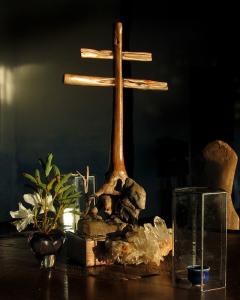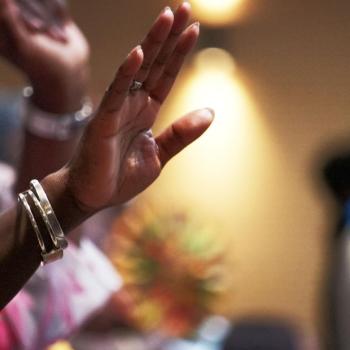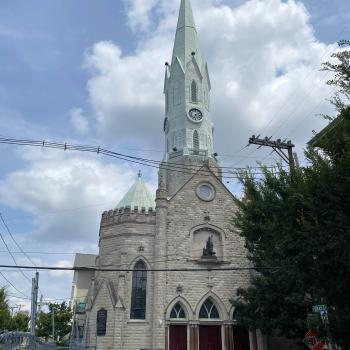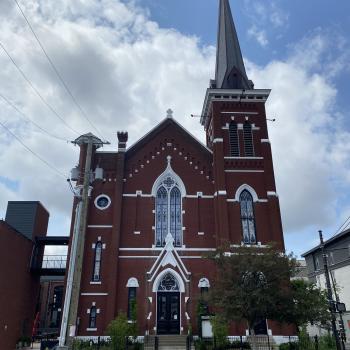For some who seek to tear the veil between material reality and what lies beyond, a mere silent mind is of little value. To seize their heart’s desire, to break the surf of the ample oceanic nature of Being, a more potent remedy is required. Although it may seem rather contrary to the quest at hand, the use of visionary plants for sacramental purposes (i.e. entheogens) is a preferred avenue for part of the world’s religious adherents as they pursue the unending aisle towards glimpsing the vestiges of God.
Beginning with the discourse that follows, I shall attempt to describe the ritual use of two consciousness-altering substances within two distinct religious traditions—both of which blossomed in the tropical climates of the Western Hemisphere during the

twentieth century.
The psychedelically-essenced items to be dealt with are: the Amazonian visionary brew known as ayahuasca, and a psychoactive herb acknowledged by many titles, but is more formally christened as cannabis.
The former will be discussed as an essential component within the Santo Daime faith and the latter a significant, but not necessarily mandatory, element used by those within the Rastafari fold. As a way of coaxing the handling of these plant-based remedies into more familiar territory, I will include within this undertaking very brief allusions to that of the Christian Eucharist.
A Mysterious Brew
Representing a crucial apportionment of the faith’s practice, ayahuasca saturates the building blocks of the Santo Daime religion; the substance is the cornerstone of Daimista worship.
Before I examine the paramount role of this “entheogen” in its respective spiritual conclave, please allow me to speak about the substance itself. Ayahuasca is a South American concoction synthesized from a vine known as Banisteriopsis caapi and various other plants rich in the chemical compound and extraordinary hallucinogen DMT. The vine itself is unable to adequately produce the intense visionary experiences associated with the rainforest broth in question and so its true power lies in its ability to perform as an “effective short-acting monoamine oxidase inhibitor.”[i]
Indeed, the dimethyltryptamine (DMT) inhabiting the additional ingredients of the brew would typically be rendered impotent when passing through the gut if it weren’t for the capabilities of the Banisteriopsis vine.[ii] Caapi opens up the body and allows it to fully embrace the work of DMT.
Since the ayahuasca blend is ingested rather than smoked, its hallucinogenic effects can last for hours, allowing the mental adventurer to coast along its lengthy visionary waves for an optimum eye-opening mystical experience. It is with little doubt that this Amazonian beverage is a profound chemical revelation, but it is not a new discovery; it is an age-old act of chemistry, having been performed by indigenous South Americans for generations.
As a result of its longevity, many shamanic traditions throughout history have laid claim to this entheogenic brew and have successfully incorporated its use into their rituals. The influence of this substance doesn’t end at the borders of tribal encampments, however, as several syncretic religions have also found life by combining ayahuasca consumption with religious symbols and prayers derived from other faiths. One such example of substance-induced syncretism is the belief system molded by the late Raimundo Irineu Serra.
Santo Daime
Master Irineu, an Afro-Brazilian originating from the town of Sao Vicente, initiated the Santo Daime religion in May of 1930.[iii] This budding faith began as a form of religiosity that cleaved to native shamanist traditions all while devouring a host of influences ranging from folk Catholicism to that of European esotericism.[iv]
Consuming ayahuasca is the leading ritual amongst followers of the faith—who refer to it as simply “Daime”— as they consider it to be “a substance in which a sacred, universal and all-embracing cosmic life-force is found in an especially (but not exclusively) concentrated form.”[v] For the Daimistas, the brew is an instructor whose lessons vary in appearance, structure, and philosophical interpretation from student to student and atmosphere to atmosphere, but all who participate in Santo Daime gatherings are expected to partake of this sacrament of a dingy-brown color.
Unlike the Christian communion cup, Daime is taken not only once, but multiple times throughout the duration of a given event. It is received at the onset of rituals and “at intervals thereafter of anything between 90 minutes and 2 hours.”[vi] By absorbing smaller doses, those who consume the beverage usher in disunion with emotions and allow themselves to delve deep within to reexamine memories and past thoughts without attachment.
At the climax of higher doses, visionary experiences, vivid images, and momentous insights occur and a more intoxicating effect grabs ahold of the voyaging mind and body. Such otherworldly perceptions can even conclude—as some have described—“journeys to other realms and dimensions where an assortment of spiritual beings are met and engaged.”[vii]
The consumption of ayahuasca is not without overt physical effects, however, as the Daime often induces a mild form of emesis, but even this is viewed in a positive light by followers of Master Irineu’s religion. According to Daimistas, the purging of abdomen occupants is “a physical manifestation of inner spiritual cleansing.”[viii] It reveals to the participant and his/her surrounding community that the Daime is enacting a purifying work and is indeed fulfilling its spiritual purpose.
Despite it being displayed upon an immensely high pedestal, the Amazonian brew is not the only ritual practice exhibited at a Santo Daime gathering, nor is it the only sacrament. Daimistas also engage in ceremonial hymn singing—where much of the faith’s theology and philosophy is laid bare— and partake in the smoking of “Santa Maria.”[ix] I now turn to this particular substance known to the Rastas as “ganja” in an attempt to explore its significance within a religious framework originating on the Caribbean island of Jamaica…
To continue this thread, please check out my next entry on the use of hallucinogens in the Rastafari Movement.
[i] Terence McKenna, Food of the Gods: The Search For the Original Tree of Knowledge (New York: Bantam, 1992), 225
[ii] Ibid., 226
[iii] Andrew Dawson, Santo Daime: A New World Religion (Bloomsbury, 2013), 8
[iv] Ibid., 14
[v] Ibid., 54
[vi] Ibid.
[vii] Ibid., 56
[viii] Ibid.
[ix] Ibid., 57
















